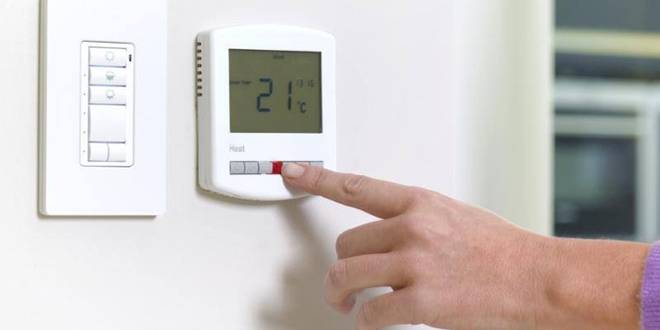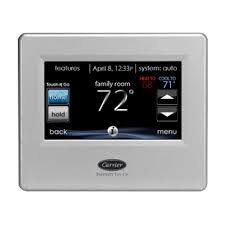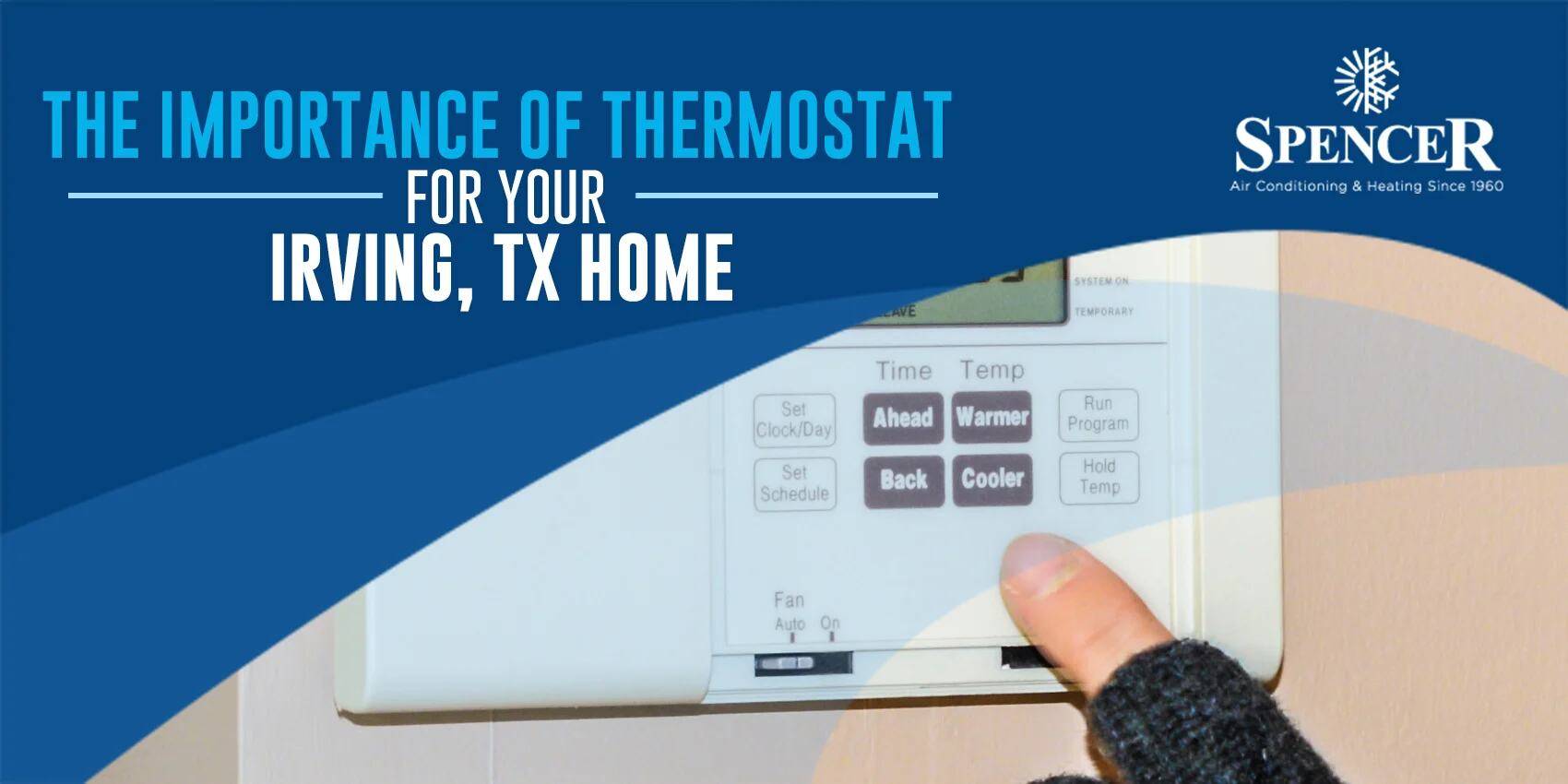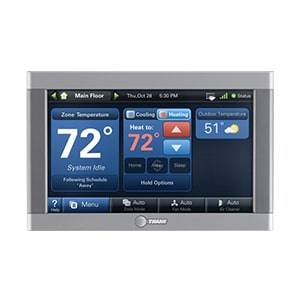
An optimally programmed thermostat is key to maintaining a comfortable and energy-efficient home. Whether it’s the sweltering heat of summer or the chill of winter, having the right settings can make a significant difference in both your comfort and your energy bills. At Spencer Air Conditioning & Heating, we understand the importance of effective thermostat programming. In this post, we’ll explore how to master your AC thermostat for optimal performance and efficiency.
Are you interested in learning more about our residential HVAC services? Check out our residential solutions for comprehensive support tailored to your needs.
Understanding Your Thermostat
Before diving into the specifics of programming your thermostat, it’s important to understand the different types available and their key features:
- Manual Thermostats: These are the most basic type, requiring you to adjust the temperature setting manually. They are simple to use but lack advanced features for energy savings.
- Programmable Thermostats: These allow you to set a schedule for your heating and cooling system. You can program different temperatures for various times of the day and days of the week, ensuring comfort when you’re home and energy savings when you’re not.
- Smart Thermostats: The latest in thermostat technology, smart thermostats offer all the features of programmable thermostats and more. They can be controlled remotely via smartphone apps, learn your habits to adjust settings automatically, and provide energy usage reports.
Understanding the capabilities of your thermostat is the first step toward optimizing your home’s climate control. If you need help with your current thermostat or are considering an upgrade, our residential services can provide you with expert advice and installation.

Optimal Temperature Settings
Programming your thermostat with the right temperature settings can help balance comfort and energy efficiency. Here are some general guidelines for optimal temperature ranges:
- Summer Settings:
- When you’re at home, set your thermostat to around 78°F (26°C).
- When you’re away, increase the setting to around 85°F (29°C) to save energy.
- Winter Settings:
- When you’re at home, set your thermostat to around 68°F (20°C).
- When you’re away, decrease the setting to around 60°F (16°C) for energy savings.
Energy-Saving Tips:
- Adjust by degrees: Small adjustments can lead to significant savings. Each degree you raise the thermostat in summer or lower it in winter can save about 1% on your energy bill over eight hours.
- Use ceiling fans: In summer, ceiling fans can make the room feel cooler, allowing you to set the thermostat higher without sacrificing comfort.
- Layer up in winter: Wear warmer clothing indoors in winter to stay comfortable with a lower thermostat setting.
By adhering to these settings and tips, you can enjoy a comfortable home while keeping energy costs in check. For more detailed advice and personalized solutions, consider our Comfort Maintenance Plan to ensure your system runs efficiently year-round.
Programming Your Thermostat
Setting up your programmable thermostat correctly can significantly enhance your home’s comfort and efficiency. Here’s a step-by-step guide to help you get started:
- Read the Manual: Before programming, familiarize yourself with your thermostat’s manual. Understanding the specific features and functions will make the process easier.
- Set the Time and Date: Ensure your thermostat’s clock is set correctly. This is crucial for scheduling accurate temperature changes.
- Determine Your Schedule: Identify the times you are typically at home, asleep, or away. This will help you create an effective program.
- Program Weekdays and Weekends:
- Weekdays: Set a comfortable temperature for when you wake up. Adjust it to a more energy-saving setting when you leave for work. Set it back to a comfortable setting before you return home and adjust it again for bedtime.
- Weekends: If your schedule is different on weekends, create a separate program. Many thermostats allow you to set different schedules for weekdays and weekends.
- Use Hold and Vacation Modes: Utilize these features for temporary changes. The hold mode keeps a constant temperature, overriding the programmed schedule. Vacation mode sets an energy-saving temperature while you’re away for an extended period.
Example Schedule:
- Wake Up: 6:00 AM – Set to 70°F (21°C)
- Leave Home: 8:00 AM – Set to 78°F (26°C)
- Return Home: 6:00 PM – Set to 70°F (21°C)
- Bedtime: 10:00 PM – Set to 66°F (19°C)
By programming your thermostat according to your routine, you can maximize comfort while minimizing energy use. If you need assistance with programming or want to explore advanced options, our residential HVAC services are here to help.
Advanced Features of Smart Thermostats
Smart thermostats offer a range of advanced features designed to enhance your home’s comfort and energy efficiency. Here are some of the key benefits and how to make the most of them:
- Remote Control:
- With smart thermostats, you can control your home’s temperature from anywhere using a smartphone app. This feature is perfect for adjusting settings on the go or ensuring your home is comfortable upon your arrival.
- Learning Algorithms:
- Many smart thermostats can learn your schedule and preferences over time. They automatically adjust the temperature based on your routines, maximizing comfort and efficiency without requiring constant manual adjustments.
- Energy Reports:
- Smart thermostats provide detailed energy usage reports, helping you understand your consumption patterns. These insights can guide you to make more energy-efficient decisions and save on utility bills.
- Integration with Other Smart Devices:
- Smart thermostats can often be integrated with other smart home devices like voice assistants (Amazon Alexa, Google Home) and smart lighting systems. This integration allows for more cohesive control over your home environment.
- Geofencing:
- Some smart thermostats use your phone’s location to determine whether you’re home or away. This geofencing feature automatically adjusts the temperature to save energy when you leave and ensure comfort when you return.
Making the Most of Smart Thermostats:
- Set up geofencing: Ensure the thermostat adjusts based on your proximity to home.
- Customize schedules: Even with learning algorithms, setting up initial schedules can provide a good baseline for the thermostat to learn from.
- Monitor and adjust: Regularly review energy reports to see where you can make further improvements.
By leveraging these advanced features, you can enhance your home’s comfort while optimizing energy usage. If you’re considering upgrading to a smart thermostat or need help setting one up, check out our residential HVAC services for professional support.

Common Mistakes to Avoid
Programming your thermostat effectively can lead to significant energy savings and improved comfort. However, there are common mistakes that can undermine these benefits. Here are some pitfalls to avoid:
- Setting the Thermostat Too Low or Too High:
- Extreme settings do not cool or heat your home faster; they only lead to energy wastage. Stick to recommended temperature ranges for optimal performance.
- Frequent Manual Adjustments:
- Constantly changing the thermostat settings can reduce efficiency. Rely on your programmed schedule or smart thermostat’s learning capabilities for consistent and efficient temperature management.
- Ignoring Maintenance:
- A well-maintained HVAC system operates more efficiently. Regularly check and replace air filters, and schedule professional maintenance to ensure your system is in top condition. Our Comfort Maintenance Plan offers comprehensive maintenance services to keep your system running smoothly.
- Not Using Programmable Features:
- If you have a programmable thermostat, make sure to utilize its scheduling features. Manually setting the temperature each time defeats the purpose of having a programmable unit.
- Incorrectly Placing the Thermostat:
- Placing the thermostat near heat sources, direct sunlight, or drafty areas can lead to inaccurate readings and inefficient operation. Ensure it is installed in a central location away from these influences.
- Overlooking Zoning Options:
- If your home has multiple zones, ensure each thermostat is programmed correctly. Zoning allows for more precise temperature control in different areas, improving comfort and efficiency.
Avoiding these common mistakes can help you get the most out of your thermostat. For professional assistance and expert advice, consider our residential HVAC services to optimize your home’s climate control.
Maintenance and Troubleshooting
Regular maintenance and timely troubleshooting are essential to ensure your thermostat and HVAC system function optimally. Here are some tips to keep your system running smoothly and address common issues:
Regular Maintenance Tips:
- Replace Air Filters:
- Change your HVAC system’s air filters every 1-3 months to maintain good airflow and efficiency.
- Check Thermostat Settings:
- Periodically review and update your thermostat settings to reflect any changes in your schedule or preferences.
- Inspect the Thermostat:
- Ensure the thermostat is clean and free of dust. Gently clean the unit with a soft brush or cloth.
- Schedule Professional Inspections:
- Regular professional maintenance can catch potential issues before they become major problems. Our Comfort Maintenance Plan provides comprehensive inspections and tune-ups for your HVAC system.
Troubleshooting Common Issues:
- Inaccurate Temperature Readings:
- Check if the thermostat is exposed to direct sunlight or drafts, and relocate it if necessary. Ensure it’s installed away from heat sources and in a central location.
- HVAC System Not Responding:
- Verify that the thermostat is set to the correct mode (heating or cooling) and that the temperature setting is appropriate. Check the batteries and replace them if needed.
- Unexpected Temperature Swings:
- Ensure the thermostat is level and securely mounted. Recalibrate if necessary, following the manufacturer’s instructions.
- Blank Thermostat Screen:
- Replace the batteries and check the circuit breaker. If the problem persists, consult a professional technician.
Regular maintenance and prompt troubleshooting can prevent many common issues and extend the life of your HVAC system. For expert support and maintenance, visit our contact page to schedule a service appointment.

Conclusion
Programming your thermostat effectively is a simple yet powerful way to enhance your home’s comfort and efficiency. By understanding the different types of thermostats, setting optimal temperature ranges, and avoiding common mistakes, you can make the most of your HVAC system. Additionally, leveraging the advanced features of smart thermostats can further optimize your home’s climate control.
Regular maintenance and troubleshooting are also crucial to ensuring your thermostat and HVAC system operate smoothly. At Spencer Air Conditioning & Heating, we are committed to helping you achieve the perfect balance of comfort and energy efficiency in your home. Our comprehensive residential HVAC services and Comfort Maintenance Plan are designed to support you every step of the way.
Ready to take control of your home’s climate and energy efficiency? Schedule a service appointment with us today by visiting our schedule page or reaching out via our contact page.




